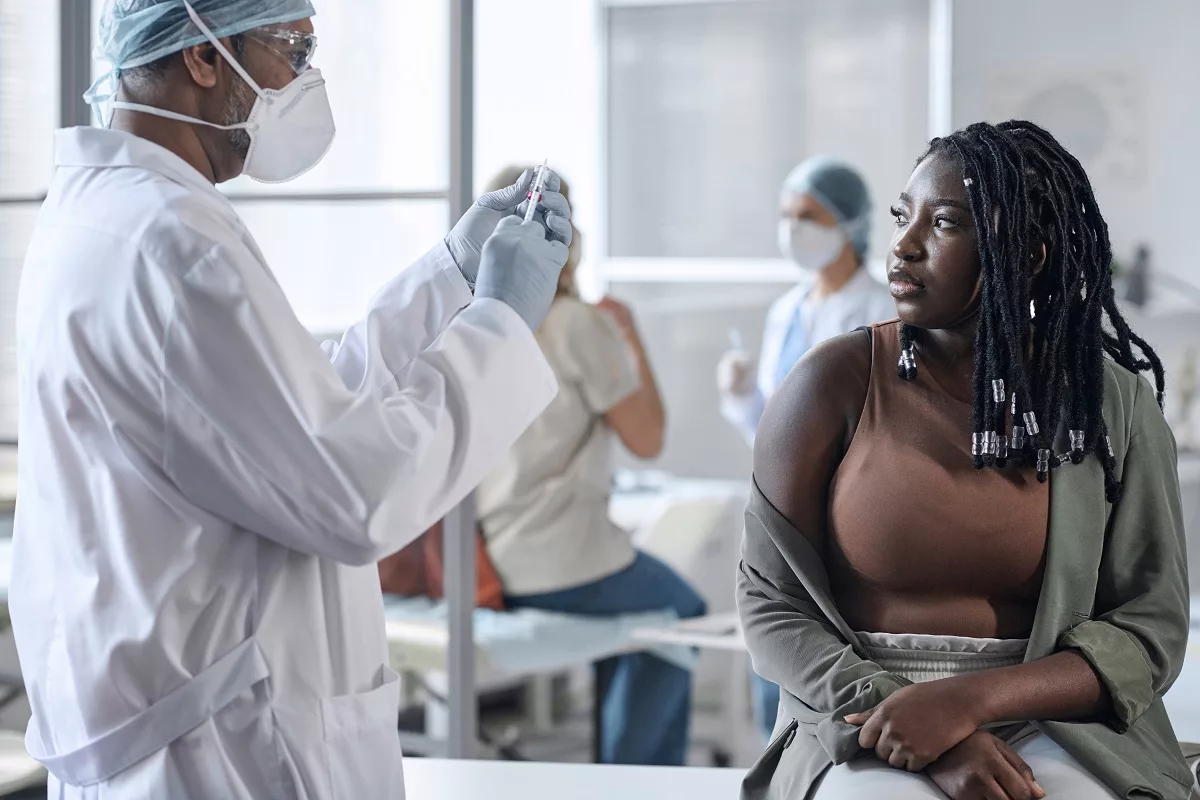A rare type of non-Hodgkin lymphoma that begins in the T lymphocytes (a type of white blood cell) is called T-cell lymphoma. In general, there are multiple forms of this type of cancer. Physicians usually prescribe different treatments for people with T-cell lymphomas because it depends on several factors. For example, the type and severity of the condition, age, existing health problems, and preferences. In most cases, physicians treat this type of cancer with chemotherapy, targeted therapy, immunotherapy, and a stem cell transplant.
Types
Healthcare professionals have divided this type of non-Hodgkin lymphoma into the following subtypes. They are based on whether the condition is aggressive (the tumor grows very quickly) or indolent (the cancer grows slowly). For example:
Aggressive T-Cell Lymphomas
- Adult T-cell lymphoma/ leukemia (human T-cell lymphotropic virus type I positive) – This type often negatively affects the skin and bones.
- Anaplastic large cell lymphoma (ALCL) – This subtype can be cutaneous or systemic. In the systemic subtype, abnormal cells develop throughout the body, but in the cutaneous subtype, it affects the skin only. In rare cases, physicians associate a subtype of ALCL with artificial breast implants.
- Angioimmunoblastic T-cell lymphoma (AITL) – This subtype usually causes symptoms similar to certain autoimmune disorders, including autoimmune hemolytic anemia (AIHA) and immune thrombocytopenia (ITP).
- Enteropathy-associated T-cell lymphoma – In such cases, the cancer begins to grow in the intestines.
- Hepatosplenic gamma/delta T-cell lymphoma – This type of cancer impacts the liver and spleen.
- Nasal NK/T-cell lymphoma – In such cases, abnormal cells develop in the nose and upper airway lining cells, but may also affect the skin or gastrointestinal (GI) tract.
- Peripheral T-cell lymphoma – This form of T-cell lymphoma does not fit in any subtypes listed above.
Indolent T-Cell Lymphomas
- Cutaneous T-cell lymphoma – This form of T-cell lymphoma is one of the most common subtypes, and it also includes mycosis fungoides and Sezary syndrome.
- T-cell prolymphocytic leukemia
- Subcutaneous panniculitis-like T-cell lymphoma – In such cases, the cancer negatively affects tissues under the skin.
Symptoms
The symptoms usually appear differently among people with this type of cancer because it depends on the part of the body it develops in (including the skin, lymph nodes, gastrointestinal tract, spleen, or other parts), the severity and subtype of the cancer, overall health, and age. Check below the most common symptoms often noticed in people with T-cell lymphoma:
- Heavy night sweats
- Pain in the chest, abdomen (belly), or bones
- Fatigue (extreme tiredness) that often appears with no apparent reason
- Swollen lymph nodes that may cause swelling in the neck, armpits, or groin
- Fever – Usually, people with this type of cancer experience a high fever similar to that when the body fights an infection. For example, 103 degrees F (39.5 degrees C) for 2 or more hours.
- Unusual weight loss – It often occurs when you lose 10% of the total body weight without obvious reasons.
In general, this type of non-Hodgkin lymphoma causes symptoms similar to other less serious health conditions. If you experience one or more of the previous symptoms, it does not mean you have T-cell lymphoma. However, do not hesitate to see a doctor for a diagnosis, especially if you have swollen lymph nodes for more than 14 days.
Causes and Risk Factors
Unfortunately, doctors do not fully understand why T-cell lymphoma occurs. However, it often appears like other types of cancer when specific cells develop DNA changes (mutations). In normal circumstances, DNA holds instructions that tell cells when to grow, multiply, and die. However, a mutated DNA gives the cells different instructions that make them grow and multiply without control. When abnormal cells become too numerous, they form a mass called a tumor. Over time, the tumor may break and spread to other parts of the body (such as the lungs). In such cases, the condition is called metastatic cancer.
However, healthcare professionals have identified some factors that could increase the risk of developing T-cell lymphoma. Check below some examples:
- Age – Those who are over 55 years old are more prone to develop this type of cancer compared to younger individuals.
- Sex – According to some research, T-cell lymphoma mostly affects males.
- Race – White and Asian people have an increased risk of developing T-cell lymphoma compared to other races (such as Black people).
- Autoimmune disorders
- Continuous exposure to carcinogens (including ultraviolet light and workplace chemicals)
Complications
People with this type of cancer may also experience some complications, especially without treatment or when the cancer is found in advanced stages. Check below some examples:
- Skin problems (including itching, lesions, rashes, and others)
- An increased risk of infections (including bacterial, fungal, and viral infections)
- Organ dysfunction
- Hematologic problems (such as low blood counts)
- Neurological issues (including peripheral neuropathy)
- Cardiovascular problems
- Renal failure
This document does not contain a complete list of T-cell lymphoma complications. However, you can talk with your healthcare professional about ways to prevent these complications.
Unfortunately, there is no way to prevent this type of cancer because physicians do not know the exact cause. In any case, you can reduce the risk of developing it by managing risk factors (such as autoimmune disorders).
Diagnosis
Healthcare professionals usually begin the diagnosis of a T-cell lymphoma with a physical examination and questions about the symptoms and medical history. However, to confirm the condition and rule out other diseases that cause similar symptoms, physicians may perform the following tests. Examples include:
- Complete blood count (CBC)
- Lactate dehydrogenase (LDH)
- Comprehensive metabolic panel (CMP)
- Peripheral blood smear
- Bone marrow aspiration
- Immunophenotyping
- Specific tests to check for viruses, including Epstein-Barr virus, human immunodeficiency virus (HIV), human T-cell lymphotropic virus type I positive, and others.
- Imaging tests – For example, an MRI (magnetic resonance imaging) scan or a PET (positron emission tomography) scan.
In addition, once you are diagnosed with a T-cell lymphoma, physicians often perform additional imaging tests to determine the stage (extent) of the cancer. It helps make the best treatment plan for you.
Treatment
Commonly, doctors prescribe different treatments for people with T-cell lymphomas because it depends on the affected part of the body. Check below some treatments often recommended for people with this type of non-Hodgkin lymphoma:
- Watchful waiting – Doctors may recommend watchful waiting, which includes regular checkups to monitor the tumor for people who develop a slow-growing T-cell lymphoma subtype.
- Chemotherapy – This treatment involves strong medications to destroy cancerous cells throughout the body. While most people get chemotherapy intravenously (IV), a pill form is also available. Sometimes, doctors may recommend this treatment before surgery to shrink a large tumor or after surgery to destroy cancerous cells that may remain even after surgery. When surgery is not an option, chemotherapy is often recommended along with radiation therapy.
- Radiation therapy – This option uses powerful energy beams to destroy cancer cells. This energy comes from protons, X-rays, or other sources.
- Targeted therapy – Doctors often recommend this treatment in advanced stages of cancer or when other options do not work. It involves medications that kill a substance in the cancer cells, causing them to die.
- Immunotherapy – Most cancerous cells produce certain chemicals that help them hide from the immune system. Immunotherapy helps boost the immune system to find and kill these abnormal cells. Commonly, it is recommended for people with metastatic cancer or when other treatments are not effective.
- Chemotherapy with stem cell transplantation – The immature cells in the bone marrow are called stem cells. In some cases, doctors may recommend autologous stem cell transplantation or allogeneic stem cell transplantation (rarely).
Additionally, if you have a T-cell lymphoma, you can consider participating in a clinical trial. In a clinical trial, you may get new treatments or a combination of existing ones to treat this type of cancer.
Home Remedies
The following remedies may help ease the symptoms and improve the effectiveness of treatment. Check below some examples:
- Adopt a healthy diet, including fresh fruits, vegetables, and whole grains
- Regularly perform physical exercise because it helps reduce stress (you should aim for at least 30 minutes of physical exercise per day)
- Get plenty of rest
Frequently Asked Questions
Is T-cell lymphoma curable?
There are some subtypes of T-cell lymphoma that go into remission after treatment. It means the tests show no disease, and you do not have symptoms. However, in general, most subtypes of T-cell lymphoma cannot be cured or may recur after treatment.
When should I go to the emergency room?
It is advised to call 911 or go to the nearest emergency room (ER) if you experience severe symptoms or adverse reactions from medications you are using to treat T-cell lymphoma.
Are T-cell lymphomas common?
In general, this type of cancer occurs quite rarely. According to the American Cancer Society, approximately 89,000 people in the U.S. received a lymphoma diagnosis in 2023. Moreover, T-cell lymphomas account for 10% of all diagnosed lymphomas (about 8,000 people). If you have additional questions, ask your healthcare provider.




